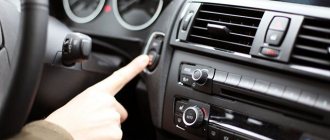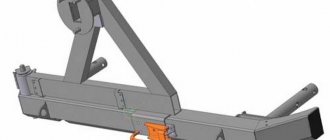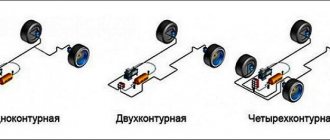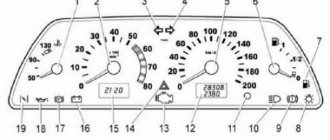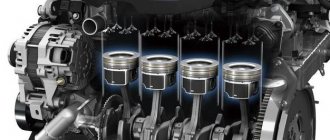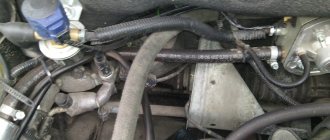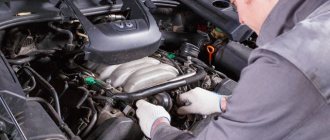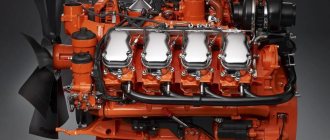To improve the performance of your car, you can install a Niva engine from a foreign car without modifications. The VAZ-2121 has long been considered one of the best domestic cars both in terms of engine power and driving performance. But now this car model has become outdated, and many motorists are trying to somehow improve it. What engine should be installed as an analogue to the 1.7 liter petrol injection engine?
Replacement problem
The fact is that to replace the engine on a VAZ-2121, you can choose almost a dozen different engines, but they are all from foreign cars. But the main problem is that you will have to do some additional work during installation, for example, install or change fasteners, add new parts. Because of this, it is not so easy to find a budget replacement option. The choice is significantly narrowed down to just a few options. For an engine to be suitable for installation, it must meet several conditions:
Which engine should you consider first?
Improved Niva
The injector installed on the Niva, although it reduces fuel consumption, is still not the most economical option in urban conditions with traffic jams and other delays. On the highway and during long trips outside the city, this is not felt so much, since the car works without stops and downtime. Due to the unprofitability of cars in urban environments, drivers are thinking about a good and effective replacement for the old injection-type engine in their car. The best option would be a diesel engine for the Niva. It has approximately the same power characteristics, but its fuel consumption is comparatively lower. Also, diesel is less capricious in terms of fuel quality. What options from this category of motors are worth detailed consideration?
The first and most worthy candidate is the XUD 9 SD from Peugeot. This engine was used to create a modified version of the Niva - model 212151 with a French engine. It can be installed on the Niva without any problems - the fastenings of the parts and the assembly are identical, the motor fits perfectly in size, and in addition, there are some advantages from its installation.
In fact, this is the only option that suits all parameters.
Modified options
Since it is not always possible to supply an engine of a certain foreign car, it is worth considering imported production options that require a little modification:
- The first candidate will again be the French engine from Peugeot XUD 11 series. Since the power of this unit is higher than that of the previous model, some changes will need to be made to the design of the Niva - replacing the gearbox. An acceptable option is a gearbox from Fiat Polonez. In addition, a good solution would be to replace the front supports of the power plant fasteners, pan and exhaust system. It is also worth replacing the drive elements with similar parts from the Chevrolet Niva.
From Priora
One of the most popular tuning options for domestic classics and Nivas is the installation of a 16-valve engine from Priora. Thanks to the unification of many spare parts, installation problems are minimal. Even with a 1.5 liter engine there is a good increase in power, but it is worth considering the fact that the gearbox is not designed to work with such loads, and the axles will not be very happy either.
History of diesel engines on Niva
The desire to improve fuel efficiency and add strength to the model was undertaken more than once by the manufacturer itself.
Thus, in 2014, the engine from Fiat cars under the general name MultiJet was actively tested on the VAZ-2121. This power unit received the title “Engine of the Year” back in 2005, and it was actively installed on the Fiat Doblo. It is difficult to call the technical characteristics of the motor outstanding from the perspective of today:
- Working volume – 1.3 l.
- Torque – 180 Nm.
- Installed power – 85 hp.
When testing the engine, it turned out that modernization of transmission elements is required, since a unit with a torque of up to 165 Nm can be installed on the Niva. Given the crisis in the country at that time, a good idea was postponed for an unknown period of time.
Another indirect example of attempts to introduce a diesel heart was the release of a trial batch of Chevrolet Niva to the market. The Togliatti company began installing diesel engines. They even managed to get permission to keep the trademark.
The Chevrolet Niva model received a set of two diesel engines - a naturally-aspirated diesel engine and an engine with a turbo prefix. The machine had the following technical characteristics:
- Working volume – 1.9 l.
- Torque – 195 Nm.
- The installed power of the naturally aspirated engine and turbo is 100/120 hp. With. respectively.
- Fuel consumption is about 7.5 l/100 km in mixed driving mode.
With such equipment, the Chevrolet Niva lost in dynamics, and the workmanship did not satisfy customers. Perhaps for this reason, such a machine was not widely used.
Bottom line
Modifying a Niva with a diesel unit is permissible; just remember to register the changes according to the law in order to avoid troubles. It is better to modify the above units, they have been tested and their installation will be simpler and cheaper than others. Plus, they're guaranteed to fit. By choosing the specified boxes, you will avoid problems of compatibility of the motor with the chassis, which increases the service life of both units.
0
Author of the publication
offline for 2 months
Practical advice for installing a diesel engine
When deciding to install it yourself, you should pay attention to the following experience.
Among the possible units that the designers of both the classic car and the Chevrolet Niva considered was the Peugeot engine with the index XUD-9SD. Not the most powerful unit (from 69 to 75 hp) is highly reliable. When planning such tuning, you need to be prepared to make some modifications:
- Replace the gearbox. Among the options, a box from Fiat Polnes was offered, as it would work with such an engine. But it won’t be easy to find a unit from a car that is now rare.
- Clutch mechanism. When searching for a box, they immediately select a clutch mechanism, which must ensure transmission of rotation and match in size.
- Engine support points. When installing on the Niva, the front engine mounts required modifications.
- Pallet shape. Taking into account the dense layout of the Niva’s engine compartment, the pallet requires an original shape, and was often made individually.
- Exhaust system. Minimal modifications to the exhaust piping are required.
In some cases, to increase the safety margin, it is noted that it is necessary to install front-wheel drive parts from the Chevrolet Niva model. But with gentle operation, such modification is not necessary.
The serial Niva with this engine was produced until 2009 and was mainly exported. With a certain amount of luck, the car can still be found in advertisements for sale. A special feature of the car is its low dynamics. The car reaches the first hundred in only 25 seconds.
Serial Niva with diesel engine
From the very beginning, engineers at the plant tried to implement the idea of installing a diesel engine on the Niva 2121 model. For the Niva it was planned to use a domestic version of the 1.5-liter turbodiesel engine. With such a unit, prototypes were unable to effectively cope with off-road driving due to insufficient power. The next step was the installation of a similar diesel engine on the 3- and 5-door versions of the Niva, but with an increased displacement to 1.9 liters. These attempts were not successful; the diesel Niva with the indicated internal combustion engines did not make it into the series.
Engine design: diesel, in-line, 4-cylinder, longitudinally mounted. Working volume: 1905 cm3 . One of the modifications of this diesel engine, when installed on the Niva, provided the vehicle with the following dynamic performance and performance characteristics:
| Maximum power: | 48 kW (69 hp) at 4600 rpm |
| Torque: | 121 Nm/2200 rpm |
| Maximum speed: | 120 km/h |
| Acceleration 0-100 km/h: | 25 sec |
| Average fuel consumption per 100 km: | 8.0-8.7 l |
The Niva with such a diesel engine turned out to be economical and performed well off-road, since the Peugeot xud9sd diesel engine provided the all-wheel drive vehicle with decent low-end torque. An additional advantage of the imported diesel engine on Niva was its reliability and relative ease of repair and maintenance.
As for the dynamics, the Niva 2121 with the Peugeot xud9sd engine accelerated to “hundreds” very slowly. The emphasis was placed on the main purpose of the car - increased cross-country ability on all-out off-road conditions. The Niva model with a Peugeot diesel engine was included in the series, but the car was produced in limited quantities and was also exclusively exported. In 2009, serial factory production of the diesel Niva completely ceased.
Engines Peugeot XUD9, XUD9A, XUD9SD, XUD9TE
Peugeot diesel engines are considered among the best. The French automaker offers a large selection of cars with this power unit. They are characterized by endurance, quality, power and good maintainability. One of the popular Peugeot diesel engines are various modifications of the XUD9 series.
The assembly of the first engines of this series began in 1982 and continued until 2005. They were assembled at several factories at once, and installed not only on cars of the French concern, but also on products of other automakers. Engines of this series could be found on Peugeot 305/306/309/405 models, Expert, Partner, as well as on products from other manufacturers. The French Peugeot began using the engine in 1982 and used it until 1998. The XUD9 was also purchased, for example, by CITROEN for its BX, Berlingo, Xantia and Xsara models from 1982 to 2005. FIAT purchased the engine for the Scudo from 1996 to 1998, and ROVER for the 200 from 1989 to 1995. FSO installed this powertrain in its Polonez from 1992 to 1997, and TALBOT installed it in its Horizon from 1982 to 1987. But the most interesting and remarkable thing is that even the domestic auto giant LADA also used a French engine to equip the Niva between 1993 and 1998.
ATTENTION! A completely simple way to reduce fuel consumption has been found! Don't believe me? An auto mechanic with 15 years of experience also didn’t believe it until he tried it. And now he saves 35,000 rubles a year on gasoline! Read more". This is the first engine model from which all other developments and modifications came.
It was first demonstrated and began to be used on French cars in 1982. At that time, it was one of the brightest and best developments in diesel engines. At the same time, subsequent modifications allowed the engine to remain relevant and in demand over a long period of time. Its main advantages were reliability and long service life. Most owners of cars with this engine note that it can easily travel 500 thousand kilometers before major repairs without serious breakdowns
This is the first engine model from which all other developments and modifications came. It was first demonstrated and began to be used on French cars in 1982. At that time, it was one of the brightest and best developments in diesel engines. At the same time, subsequent modifications allowed the engine to remain relevant and in demand over a long period of time. Its main advantages were reliability and long service life. Most owners of cars with this engine note that it can easily travel 500 thousand kilometers before major repairs without serious breakdowns.
However, it also has some disadvantages. For example, many car owners do not like the low location of the expansion tank - this makes servicing the car very difficult and makes it inconvenient. The second nuance is the cylinder head gasket, which breaks through any decrease in the antifreeze level. As it turned out, the main disadvantage of the engine was that every hundred thousand kilometers it requires expensive valve clearance adjustments. It is important to timely replace the fuel filter, otherwise the injection pump will need to be repaired. The peculiarity of replacing a fuel filter is that its expensive glass often breaks easily during the process. Another disadvantage of the engine is that at long runs there have been cases of pre-chambers falling out into the cylinders.
The unit has the following characteristics:
| Engine capacity in cubic centimeters | 1868 |
| Fuel/consumption liters per 100 kilometers | Diesel/6.9 |
| Supply system | Prechambers |
| Horsepower | 71 |
| Cylinder block/head | Cast iron R4/aluminum 8v |
| Stroke/Bore in millimeters | 88/83 |
| Compression ratio | 23,5 |
| Torque at rpm | 125/2500 |
| Maximum power at rpm | 71/4600 |
| Engine Features | Four cylinders, in-line, two valves per cylinder, timing belt drive |
The Peugeot company installed this engine on:
- Partner minivan from 1996 to 2002;
- J5;
- Ranch;
- Partner Space;
- Mk;
- 205;
- 305/Mk/Break;
- 309/Mk
In addition, the motor was used on the following cars:
- CITROEN – BX/Break;
- ROVER – 200;
- SUZUKI – Samurai/Sierra;
- TALBOT - Horizon;
The engine uses 5W-40 oil and fills 4.5 liters. Belongs to the environmental class EURO1/2. The approximate resource is about 500 thousand kilometers.
Installing a diesel engine on a Niva
One of the available options is the independent installation of a diesel engine on the Niva. To do this, you can use the services of large tuning studios or private professionals who modify cars. You can also install a diesel engine on a Niva yourself if you have some experience and specialized tools. You need to be prepared for the fact that in order to legally operate the car after replacing the engine, you will definitely need to register the changes made with the relevant government agencies.
In the process of selecting a diesel unit, many people wonder which diesel engine to put on the Niva. There are a sufficient number of diesel engines that can be installed on this car. Diesel engines of Japanese and European brands are most often installed on Niva with their own hands. The main requirement is the suitable physical dimensions of the power unit for placement in the engine compartment of the Niva.
The need to make changes to the design begins with the mounting features of the diesel engine. The second nuance is the increase in load on the front axle after installing a diesel internal combustion engine on the Niva, since an engine of this type is often heavier. For this reason, it is necessary to further strengthen both the suspension and the body after placing the engine. Almost always, the standard gearbox will also need to be replaced.
The list of general changes to the design of the Niva for a diesel engine includes: replacement of front engine mounts, modified sump, changes to the exhaust system. The engine cooling system is also subject to modernization. The cooling radiator is often changed (a radiator from a GAZ Gazelle car is suitable).
Changes are also being made to the chassis, individual elements are replaced with reinforced ones. For a regular Niva, they can be borrowed from Niva-Chevrolet. As for the operation of diesel engines, it is separately recommended to install a diesel fuel heating system.
You can also install a Peugeot diesel engine with the xud 11 index on the Niva, but in this case the gearbox will need to be changed. The VAZ gearbox with this engine will not last long. The solution is a gearbox from the Fiat Polonez model. Additionally, you will need to install another clutch. No less often, diesel engines from Japanese cars are installed on the Niva. Units with the Toyota 3c/ct index with a power of 80 and 100 hp are suitable. To replace the gearbox, you can use a 5-speed gearbox from the Noah model manufactured by Toyota.
The best option would be a diesel engine and gearbox, which were originally designed to work in tandem. In this case, the task is simplified due to the correspondence of all attachment points, as well as the coincidence of the axes of the internal combustion engine and transmission shafts. This approach eliminates difficulties in the process of combining a diesel engine and gearbox, and also significantly increases the service life of the associated components. There is no need to calculate what torque a particular gearbox with different diesel engines can withstand.
Advantages of installing a diesel power unit instead of gasoline or LPG. Choosing a suitable diesel engine for GAZelle and UAZ (UAZ) to replace a gasoline engine.
Comparison of gasoline and diesel engines. Advantages and disadvantages of diesel, reliability of diesel engine, features of its maintenance and operation.
Why does a diesel engine have a higher efficiency compared to gasoline engines? Torque and speed, diesel fuel energy.
Why oil leaks from the engine breather: signs and main causes of such a malfunction. How to understand why oil is flowing through the breather, troubleshooting.
Causes of noises and knocks when operating a gasoline engine in different modes. Detonation, knocking of hydraulic compensators, ignition faults and other reasons.
Diesel engine power increase module. Types of chip boxes, features of connection and operation of these blocks. Advantages and disadvantages of a tuning box.
Flaws
- Vibration at speed 80-90 km;
- Unreliable timing tensioner design;
- Ignition module;
- The fuel pump is noisy;
- Low torque;
- Long stroke of the gear lever;
- When the timing chain breaks, the valves bend;
- Vibration of the gear lever;
- Poor dynamics on the highway due to insufficient power.
PS. Dear Nivovody! I look forward to your comments, questions and feedback on the problems that have arisen, weaknesses and shortcomings during the operation, maintenance and repair of the VAZ 21213 engine.
Niva engines have excellent technical characteristics and have proven themselves to be quite reliable power units. At the same time, it should be understood that, like all other VAZ power units, they are not without drawbacks.
The disadvantages of this motor include:
- increased noise;
- tendency to vibration;
- increased oil consumption.
Such problems often appear after a mileage of 100,000 kilometers. Car owners need to closely monitor the condition of the cooling system.
